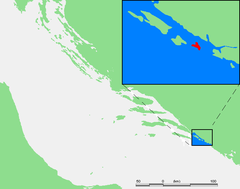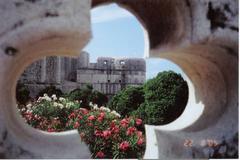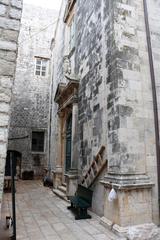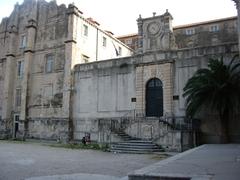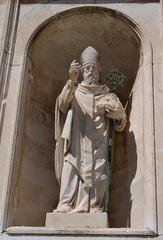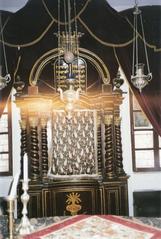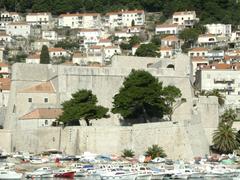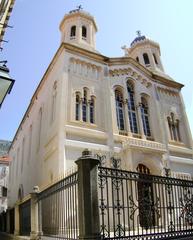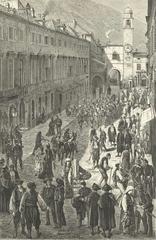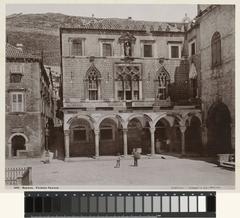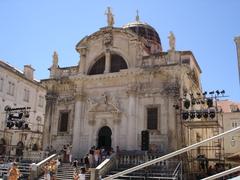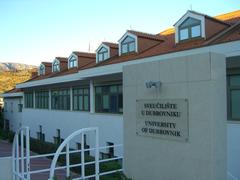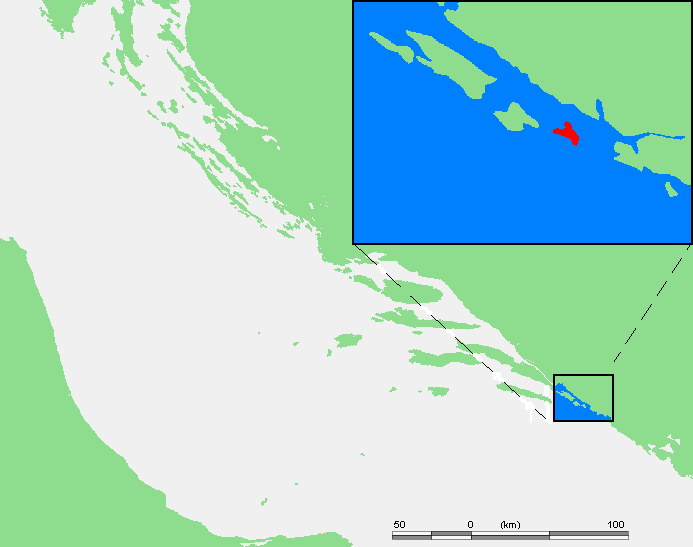
Donje Čelo Dubrovnik Visiting Hours Tickets and Historical Sites
Publication Date: 01/08/2024
Introduction to Donje Čelo
Donje Čelo, nestled on the captivating island of Koločep in Croatia’s Adriatic Sea, is a treasure trove of history, culture, and natural beauty. This serene settlement is part of the Elaphiti Islands, a short distance from Dubrovnik, making it an ideal destination for those seeking a blend of historical exploration and tranquil retreat. The island’s rich past is evidenced by archaeological finds from ancient Greek and Roman times, and its significance continued through the medieval period when it was an essential shipbuilding site for the Republic of Ragusa (Wikipedia).
Visitors to Donje Čelo can immerse themselves in its storied past by exploring its seven pre-Romanesque churches dating back to the 9th-11th centuries and relics from the Napoleonic era, which highlight the island’s strategic importance through various historical epochs. Modern-day Donje Čelo offers a peaceful escape with its stunning natural landscapes, including clear waters, hidden coves, and dense pine forests, making it a favored spot for tourists seeking both relaxation and adventure (Wikipedia).
For those interested in maritime history, Donje Čelo’s role in the Republic of Ragusa’s naval prowess, including its connection to Christopher Columbus’ crew, adds a fascinating historical layer to this picturesque locale (Wikipedia). This guide aims to provide comprehensive information on visiting Donje Čelo, including details on historical sites, natural attractions, visitor tips, and accommodations, ensuring a well-rounded and enriching travel experience.
Table of Contents
- Introduction
- History and Significance
- Natural Beauty and Attractions
- Visitor Information: Tickets, Visiting Hours, and Travel Tips
- Accessibility and Transportation
- Cultural Significance
- Accommodation and Tourism
- Special Events and Guided Tours
- Photographic Spots
- FAQ
- Conclusion
- Sources
Exploring Donje Čelo: Visiting Hours, Tickets, and Historical Sites in Dubrovnik
Ancient and Medieval History
Donje Čelo, located on the island of Koločep, has a rich history that dates back to ancient times. The earliest known traces of human habitation on Koločep date to the times of Ancient Greece. Archaeological remnants from various European conquerors, including the Greeks and Romans, have been found on the island, indicating its long-standing significance in the region (Wikipedia).
During the era of the Republic of Ragusa, Koločep, including Donje Čelo, was an important shipbuilding site. This period marked a significant phase in the island’s history, as it contributed to the maritime prowess of the Republic. Notably, two members of Christopher Columbus’ crew on the Santa Maria were sailors from Koločep, underscoring the island’s maritime heritage (Wikipedia).
Religious and Architectural Heritage
The island of Koločep is home to seven pre-Romanesque churches dating back to the times of Croatian kings, from the 9th to the 11th century. These churches are scattered across the island, with some located in Donje Čelo. These ancient structures are a testament to the island’s historical and religious significance during the early medieval period (Wikipedia).
Napoleonic Era and Beyond
The island’s strategic location made it a point of interest during the Napoleonic wars. Archaeological remnants from the Napoleonic times have been discovered on Koločep, indicating its continued importance through various historical epochs. The island’s history is a tapestry of different cultures and empires, each leaving its mark on the landscape and architecture (Wikipedia).
Modern Significance
In contemporary times, Donje Čelo has transformed into a serene tourist destination, attracting visitors with its natural beauty and historical charm. The island of Koločep, where Donje Čelo is located, is the southernmost inhabited island in Croatia and is part of the Elaphiti Islands near Dubrovnik. According to the 2021 census, the population of Koločep was 231, reflecting its small, close-knit community (Wikipedia).
Natural Beauty and Attractions
Donje Čelo is renowned for its stunning natural landscapes, including clear waters that range from deep blue to turquoise aqua. The coastline features numerous hidden coves, with the Blue Cave being a notable attraction accessible by swimming from a cove on the south side of the island. The island’s flora includes stands of tall pine and olive groves, adding to its picturesque scenery (Wikipedia).
Visitor Information: Tickets, Visiting Hours, and Travel Tips
To visit Donje Čelo, there are no specific entry tickets required. However, certain attractions and guided tours may have associated costs. The island is accessible year-round, with peak visiting hours typically during daylight. Travel tips include booking accommodations in advance during the summer season and checking ferry schedules for the most convenient travel times.
Accessibility and Transportation
The island of Koločep lies at a distance of 1 kilometer from the closest point on the mainland and about the same distance from the peninsula of Lapad, further east towards the city of Dubrovnik. The port of Dubrovnik (Gruž) is situated at the base of a bay on the other side of Lapad, requiring a 5-kilometer journey by boat to the island. The island can be reached by regular ferry services, such as Jadrolinija’s “Postira” and “Premuda,” which connect the Elaphiti Islands several times throughout the day. It is a 20-minute boat ride from Dubrovnik to Koločep by ferry, or 10 minutes by water taxi (Wikipedia).
Cultural Significance
Donje Čelo, along with the rest of Koločep, plays a vital role in preserving the cultural heritage of the region. The island’s historical sites, including ancient churches and archaeological remnants, offer a glimpse into the past civilizations that once thrived here. The local community continues to uphold traditional customs and practices, contributing to the island’s unique cultural identity.
Accommodation and Tourism
Donje Čelo offers various accommodation options for tourists, including hotels, apartments, and beach houses. The Sensimar Kalamota Island Resort (TUI BLUE) and Kalamota Beach House are among the main options for visitors. The island’s car-free environment and tranquil setting make it an ideal destination for those seeking a peaceful retreat. During the summer, the island becomes a bustling hub of activity, with hundreds of tourists staying on the island and many more visiting on day trips from Dubrovnik (Ferry Croatia).
Special Events and Guided Tours
Throughout the year, Donje Čelo hosts various cultural and festive events that celebrate the island’s heritage. Guided tours are available, offering in-depth explorations of historical sites, local flora, and hidden coves. These tours can be booked through local tour operators or arranged through hotel concierge services.
Photographic Spots
The island offers numerous picturesque spots ideal for photography. The Blue Cave, ancient churches, and panoramic views from hilltops are popular locations for capturing the island’s natural and historical beauty.
FAQ
Q: What are the visiting hours for Donje Čelo? A: Donje Čelo is accessible year-round with peak visiting hours during daylight.
Q: How to buy tickets for Donje Čelo? A: There are no entry tickets required to visit Donje Čelo. However, certain attractions and guided tours may have associated costs.
Q: What are the best ways to reach Donje Čelo? A: The island can be reached by regular ferry services from Dubrovnik, such as Jadrolinija’s “Postira” and “Premuda,” or by water taxi.
Conclusion
Donje Čelo’s historical and cultural significance, combined with its natural beauty and modern amenities, make it a must-visit destination for tourists exploring the Dubrovnik region. Its rich history, from ancient Greek and Roman times to the Napoleonic era, is reflected in its archaeological sites and architectural heritage. The island’s serene environment and accessibility from Dubrovnik further enhance its appeal as a premier tourist destination.
For more information and updates, visit the official Koločep tourism website or follow us on social media.
References
- Wikipedia, 2021, Koločep
- Ferry Croatia, 2021, Island Koločep
- Absolute Croatia, 2021, Elaphiti Islands: Koločep
- Lost in Dubrovnik, 2021, Discovering Dubrovnik’s Fascinating History
- Salt in Our Hair, 2021, Croatia 10-Day Itinerary
- Beach Searcher, 2021, Donje Čelo Beach
- Cool Destinations, 2021, Private Boat to Elaphiti Islands Hidden Caves from Dubrovnik
- The Broke Backpacker, 2021, Dubrovnik Itinerary
